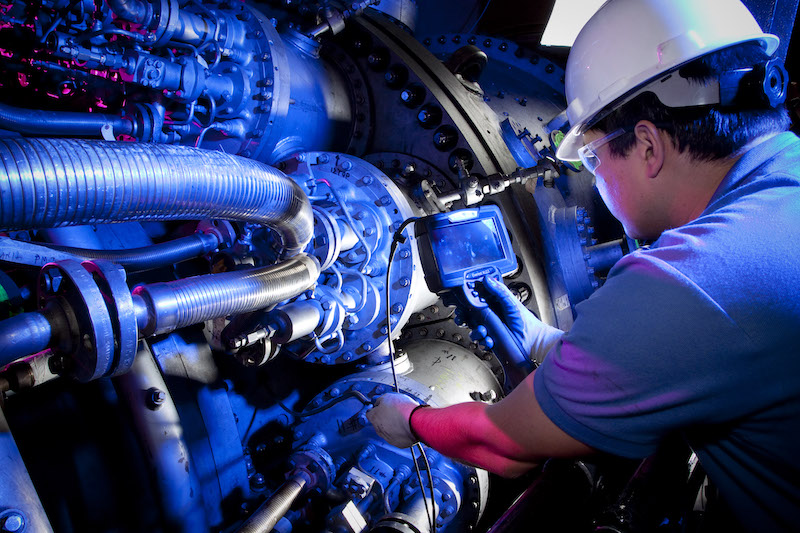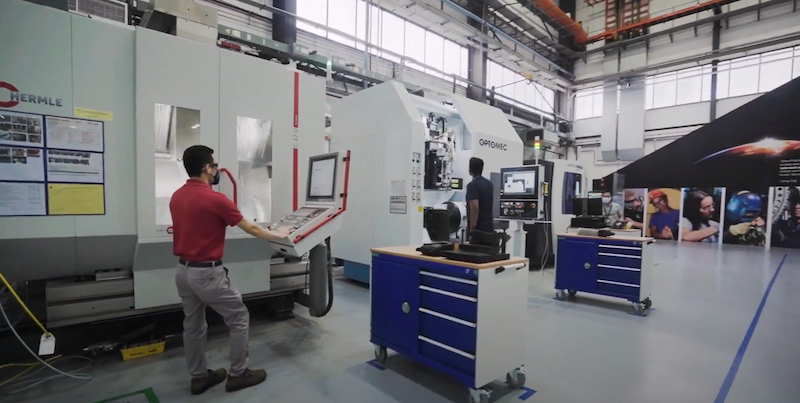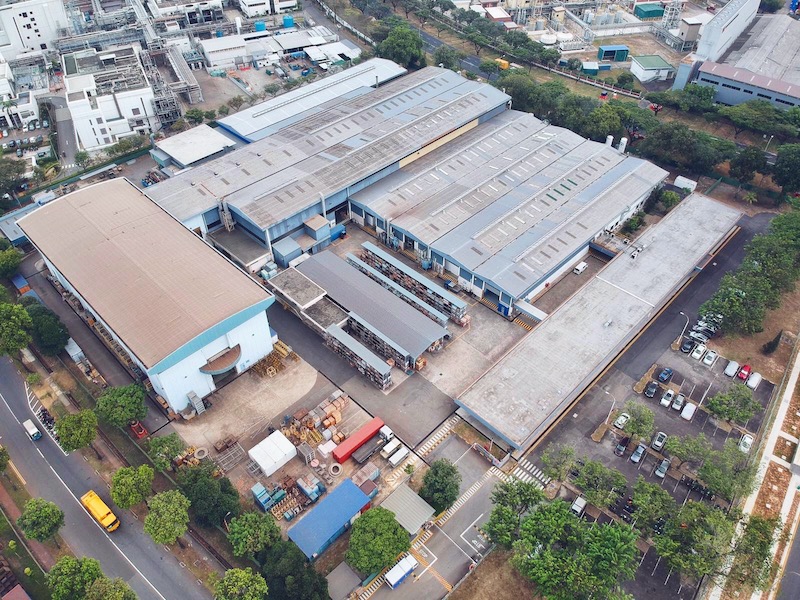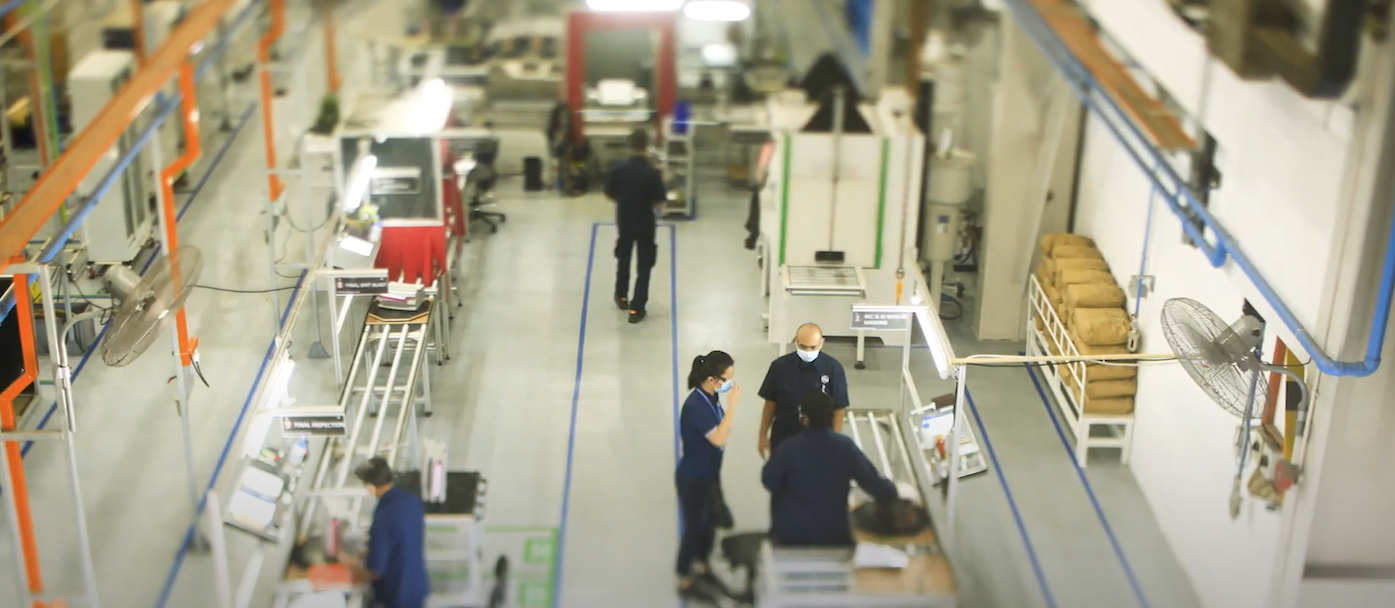On the western tip of Singapore, there’s a sprawling facility that began life in the 1970s as a shipyard for tugboats and drill ships exploring the turquoise deeps of the Indian Ocean and the South China Sea. But the site’s days as a local repair shop are no longer. GE’s Global Repair Solutions Singapore (GRSS) is now a global hub for fixing the key components in the world’s fastest-growing fleet of H-class heavy-duty gas turbines.
Four years ago, GE pledged $60 million to equip the Singaporean site for advanced gas turbine repairs. And now it is stepping up its technical expertise yet again. It has gained the capability to repair a crucial part of GE Gas Power’s powerful HA turbine, a symbol of Asia’s growth to gas-fueled power. That’s a potential game changer for Asian power generators, who have driven demand for the highly efficient HA in recent years, and it marks another step in GE’s broader ambition to make electricity more globally accessible.
No longer do customers have to send an HA rotor — the fast-whirling shaft that sucks air into the turbine’s combustion section and spins the generator — to GE’s specialist shops in North America and Europe when they require attention. Doing the job in Singapore can cut as much as two months off the repair cycle. That wins back thousands of megawatt-hours of generation and millions of dollars in revenue for Asian customers, and appreciably reduces the carbon emissions associated with a rotor repair job. “This is a very significant improvement to the lead time and delivery of repairs that supports the outage needs of our Asian customers,” says Morgan Terrill, an executive of supply chain development for GE who is based in San Sebastián, Spain.

With GRSS’s new capabilities, GE is homing in on self-sufficiency for repairs in Far East Asia. Engineers in the region are now able to complete up to 90% of repair jobs for GE’s heavy-duty families without a single component or employee leaving or entering the continent. Not only that, the beefed-up GRSS will also flex its muscle on the global stage. Around 60% of the customers for the revamped site will hail from other regions of the world, excluding the U.S. That places GRSS alongside GE’s other global centers of excellence for heavy-duty gas turbines, namely those in Greenville, South Carolina, in Dammam, Saudi Arabia, and in Belfort, France. Innovation, knowledge sharing, and standard setting are now a two-way street.
“Previously, we would have just developed all of the repairs in Greenville,” says Terrill. “It’s now cross-collaboration in action. Singapore is now contributing its own development ideas across to Greenville.”

Freeing Up Floor Space
Turning GRSS into a center of excellence was a complex task. GE managers first needed to free up floor space for the 100-metric-ton HA rotor at GRSS, which required them to shuffle the deck of its heavy-duty turbine repair capabilities in Asia. One priority was finding a new home for major repairs to GE’s stalwart B- and E-class turbine families. The solution: Expand the PT GE Nusantara Turbine Service (PT GENTS) facility in Bandung, Indonesia. The decision put the Southeast Asian country firmly on the energy map, explains Terrill. “This was great news for PT GENTS, since they’d only ever done static part repairs,” she says. “They now have investment and training for rotating part repairs across GE’s gas turbine fleets.”
Next, the GRSS team harnessed lean management, a system of incremental gains and marginal improvements that is at the heart of GE Gas Power’s turnaround, to help ensure that the new era of HA repairs would be as safe and efficient as possible. The GRSS shop floor used to be a wide-open space studded with various platforms and stands. Overhead cranes winched the cumbersome parts, with employees shuttling between the workstations to manually guide them into place and carry out repairs. “It was ergonomically difficult for employees,” says Terrill. “They were going from space to space, so they were walking huge distances over the course of the working day.”
The employees held a kaizen event, a Japanese term meaning “continuous improvement,” where they decided to rearrange their various workstations and stands into a U-shaped conveyor belt, a classic lean design. As they work through the stages of repair, Terrill notes, they’re able to just simply roll the part over on the conveyor belt. They also use special pneumatic elevators to lift and lower the components, reducing the need for energy-sapping manual interventions.

In just a matter of weeks, the team managed to eliminate all manual lifting operations from repairs to the F-class family of turbines and reduced the total distance of the journeys between workstations by hundreds of kilometers per month. They will apply the same lean practices to the HA lines.
A culture of continuous improvement will endure at GRSS, too. Employees have installed a kaizen promotion office on the shop floor, which allows technicians to share ideas for optimizing repair line processes. They have also positioned an Advanced Manufacturing & Repair Technology (AMRT) Center next to their lean, mean conveyor belts, which gives engineers a front-row seat to real-time operations. “When they see something that could be improved, they can just step out onto the line and fine-tune things,” says Terrill.
GRSS’s engineers will need every ounce of expert know-how, because it’s a big leap from fixing so-called hot gas path components to repairing rotors. Engineers at GRSS recently chalked off their 100th repair and delivery of hot gas path components. Jason Goh, a Singapore-based program manager for supply chains at GE Gas Power, describes hot gas path issues as “fairly regular” scheduled repairs. The module’s combustion liners, nozzles, and buckets are frequently exposed to temperatures of more than 1,300 degrees Celsius (2,400 Fahrenheit), so some amount of component degradation is inevitable and constant. Power generators typically keep spares of hot gas path parts so they don’t need to take their turbines offline while waiting for the return of the repaired components.

But rotor repairs are a whole new ball game. Not only can rotor issues severely impact turbine performance, but a rotor issue after several years of operations can be significant and tough to fix. Removal of the rotor, followed by robust repairs, is critical in getting the assets back in operation.
GRSS is also testament to the pro-business credentials of Singapore. Terrill says that Singapore’s Economic Development Board, which aims to position the island as a hub for business and development, has been “instrumental” in enhancing GRSS.
Meanwhile, GRSS is preparing for a steep learning curve. GE Gas Power may have introduced H-class technology to the industry 26 years ago, but it rolled out the HA in 2014, which makes the mighty turbine relatively young. (The H stands for “high-efficiency,” the A for “air-cooled.”) “With close to 150 units sold, 80-plus in commercial operation, and more than 1.8 million hours of operation, we continue to accumulate experience on the HA class of gas turbines,” says Goh. “And we’ll be ready to provide solutions to help meet our customers’ expectations.”
